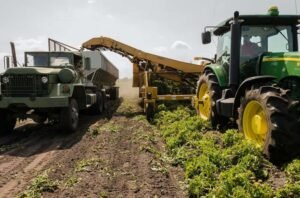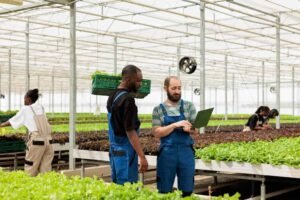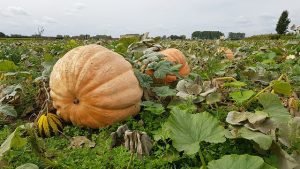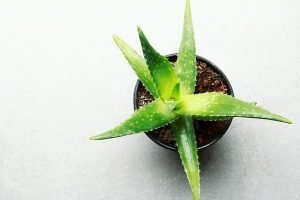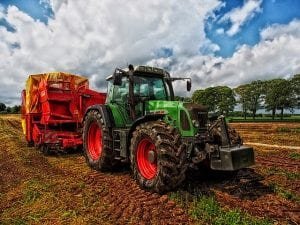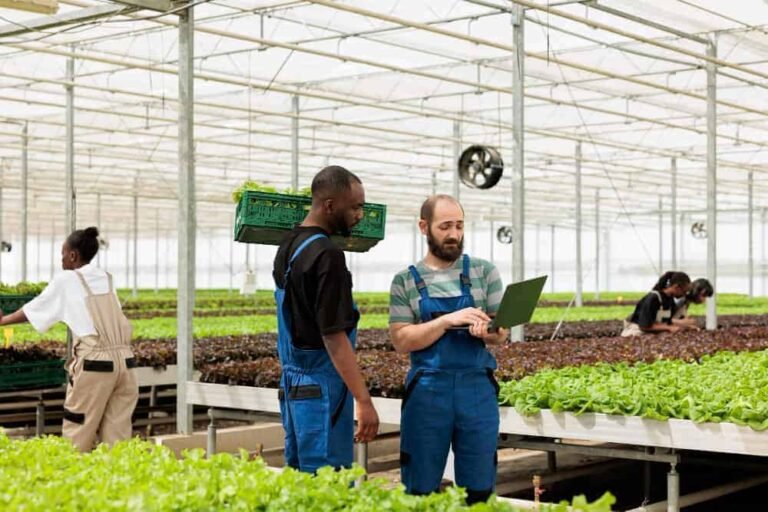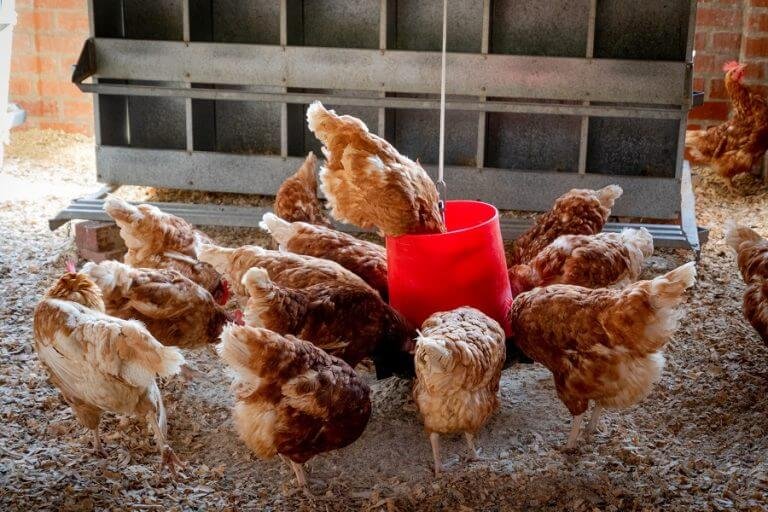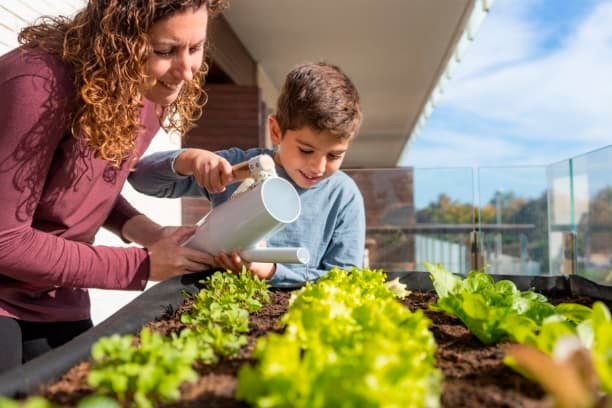Causes and Ways of Eliminating Post-Harvest Wastes

If you care about eliminating post-harvest wastes so that there will be food for all, then read this article till the end.
In a world with an ever-increasing population that is in constant demand for food, post-harvest waste is one phenomenon that must be eliminated.
Post-harvest waste refers to the quantity of food lost or wasted after harvest.
Statistics have shown that roughly one-third of the food produced in the world for human consumption every year — approximately 1.3 billion tonnes — gets lost or wasted.
This phenomenon has become a menace.
This is an 800-pound gorilla sitting in the centre of our world.
Food prices keep going higher and higher because farmers want to recoup their investments and break even.
Already, they have lost one-third of their harvest.
What is left will have to foot their bills and still provide enough for the next planting season.
In this article, we will be reviewing some of the common causes of post-harvest wastes.
We will also explore some of the possible ways of eliminating post-harvest wastes.
Causes of Post-Harvest Wastes
The causes of post-harvest wastes range from managerial problems to infrastructural challenges most of which can be curbed by applying simple principles.
1. Lack of Market Research:
Most farmers go-ahead to grow crops they think or have heard from other people to be money-spinners. They just do not have the time to carry researches to know what will work for them and what will not.
It is true that most agro ventures are highly profitable, but have you known what the market needs? This is where the saying “the customer is king” plays out clearly.
If your potential market has no interest in what you are bringing to the market, you’ve failed from the outset.
2. Lack of Marketing Strategy:
So many people think marketing is what you do after harvest.
Well, if your thought is in this line too, then you’ve got it all wrong.
Marketing starts long before your product is ready for the market.
Because farmers do not get the concept of marketing right from the outset, they end up losing most of their produce to rot, pest and sometimes, theft.
For those who take their farm produce directly to the market for sale, they may have a lot of their farm produce damaged while handling and in transit.
This is an occurrence usually peculiar with crops.
For livestock farmers, you may want to think that you don’t contribute to the post-harvest waste because your animals don’t die even though they are not sold.
I’m sorry to be the one to remind you that any feed that is given to those animals after maturity is a total waste of resources that would have been used productively to feed the next batch of livestock.
3. Transportation and Handling:
This, in fact, is a major cause of post-harvest wastes.
Wastes resulting from transportation and handling begins when farm produces are loaded onto vehicles, while on transit and continues to the time of unloading.
At each of these stages, a lot of food is lost. Some harvests may fall off and get damaged.
Others may get bruises and become unfit for sale or become pressed against one another.
4. Lack of good storage facilities:
I had to add the adjective “good” because someone would want to claim he/she has storage facilities.
The reality is, how good are your storage facilities?
If you claim you own silos, are they free from leakages?
Do they protect your grains properly against moisture, pests, and dust?
How about someone who claims to own freezers for the storage of foods that require refrigeration.
Is there a constant power supply to keep your freezers running all day, all night?
5. Direct disposal of excess food:
This is not intended to discriminate, but this practice is mostly seen among the rich folks; especially among those who are in the habit of buying every single food that tickles their fancy.
They buy spontaneously, not because they need what they are buying, but because they have more than enough money to pay for their purchases.
After storing foodstuff for several days in their store, these foods find solace in the trash cans just outside the compound.

6. Prison break!!
Yes! This may sound funny, but it contributes to post-harvest wastes.
Just imagine you own a maize farm, and you keep grasscutters in cages on the same farm.
By and by on a beautiful morning while on your routine checks, you discover that your grasscutters have escaped into the wild.
I tell you the truth, you have not only lost your grasscutters, but you will also have them to contend as pests.
Another scenario would be that of snails escaping into a vegetable farm. The catastrophe is unimaginable.
7. Market wastes:
Just like the direct disposal of food as seen in many homes, market wastes form a huge part of global food wastes.
Several million tons of food exchange hands every day in the market, but most times, not everything on the shelves of the food vendor is sold out.
The next day, buyers will naturally want something fresh – taking the leftovers from the previous day off the list of available options.
These leftovers would later be sold at ridiculous prices or left to waste at the expense of the seller, thereby creating a large mass of food waste.
There are many more causes of global food wastes, however, mentioning all the causes without proffering solutions to the problem is of no use to anyone.
Ways of Eliminating Post-Harvest Wastes
1. Carry out market research:
Know what the consumers want. Learn how they want it delivered to them and the time of delivery.
You can estimate the total number of sales you will have from an area by just carrying out research.
Something you should look out for during your research is the demographics of the population.
Are there more old people or young people?
Their occupation and the nature of their activities also.
This information will help you determine the way to better serve them.
2. Create a marketing strategy:
Goods don’t sell themselves except the goods are of great value and have a good packaging which of course is a part of the marketing strategy of the business.
You must use whatever possible means to create more markets for your products.
If you want technology, social media is a tool to leverage on.
Learn how to talk to people about your products.
You may want to hire a team of marketers to advertise your products to customers (that is if you can afford the extra cost).
You can also encourage your existing customers to recommend your products to their friends and family.
That way, you will be building a large customer base including people who are likely to have demand for your products thereby eliminating post-harvest wastes.
3. Use portable packing units and better handling equipment
Providing portable parking units make handling easier for workers.
With the use of portable packing units and machinery like a forklift can easily load onto vehicles and unload them easily.
This will not only help in eliminating post-harvest wastes, but it will also increase the speed of delivery of goods to buyers.
Your business will have an edge in the industry and your customer base will be increased because of your quick delivery service.

4. Installation of good storage facilities:
The importance of good storage facilities cannot be overemphasized.
To ensure the continuous supply of food long after the production season, adequate storage facilities must be installed on the farm, in marketplaces and in other strategic areas.
Good storage facilities preserve food for long without exposing them to dangers of dust, moisture, and pests.
For those that store frozen foods, ensure you have a standby generator with enough capacity to support your freezers.
Another way is to think green. Use renewable energy sources to power electrical devices on your farm.
5. Use a budget:
Budgeting is an important subject in both micro and macroeconomics.
A lot of unnecessary expenses has been cut down by households and government bodies using budgets.
If properly used, budgets can help in eliminating post-harvest wastes.
Before going to the market to shop for groceries, ensure you make a list of everything you would want to purchase.
While creating your budget, note those perishable foods on your list and buy them in smaller quantities that you can exhaust within a very short time.
By doing that, you are sure of having fresh foods in your store from time to time without creating so much waste.
Budgets also serve as a limiter. It keeps you focused on getting those things written in your list first.
It helps you not to get so excited about a product and deep for your purse to make payment while you have not exhausted your list.
Keeping a budget will help you buy only good and healthy foods.
This means that you will end up buying only those things which you have need of which is a great way of eliminating post-harvest wastes.
Always use the principle of “first in first out (FIFO)” when you need to top up the foodstuff you have in your store.
Ensure you bring out the old stock and keep them in a place where you can use them immediately before tampering with the new inventory.
6. Save the food!
Some parts of foods that are disposed of every year can be salvaged. Most times, not every part of farm produce is condemned.
An instance is the situation of a watermelon fruit that obtained bruises while in transit. Don’t just throw everything away because of mere bruises. Some part of it can be saved.
Waste should not always be the first thing that comes to mind when your food is not looking great. Save as much as you can before anything else.
Another way to save food is by cooking as much as you and your household can finish and by serving smaller portions of food that one can easily consume.
If you have excess leftovers, gather them together and prepare them for reuse. You are saving the world here!!
7. Do not harvest until there is demand:
There are crops that can barely stay usable after a short period of time.
They are often referred to as ‘perishables’.
A crop like cassava that begins to decay immediately after harvest should not be harvested until there is demand for it.
This, however, is an expensive way of eliminating post-harvest wastes because the land occupied could have been put into productive use to grow new crops.
The best way of creating demand for your farm produce remains the application of a good marketing strategy and carrying out marketing research as explained above.
6. Improve farm management:
Do you remember the analogy of prison break used in number 6 of causes of post-harvest waste above?
That is an obvious example of poor management practice on the farm.
You must carry out routine checks on your farm to ensure that everything is in order.
Patch all loopholes and reinforce the cages of animals kept on the farm.
Managers should keep a good record of harvested foods so that they can be sold out using the first in first out principle.
9. Convert excesses to animal feed:
A good way of eliminating post-harvest wastes is by converting excess harvest to animal feeds.
Vegetables can be fed to cattle, goats, and sheep while damaged grains can be used to feed birds.
This is a good way to put wastes to productive use.
10. Process excess farm produce to food:
In a situation when you cannot sell off all your farm produce, you can process them into other foods that will last longer.
For example, in Nigeria, yams can be sliced, dried and ground into powder to form yam flour popularly known as “Amala” among the Yorubas.
Cassava can be converted into ‘garri’ after grating, draining, and frying. It can also be dried and processed like yams to form cassava flour.
Conclusion
The world’s population is estimated to hit 9+ billion people by 2050.
There will be an increased demand for food.
So, food waste is not an option in this age.
Eliminating post-harvest wastes will help save the world from hunger.
Make your contribution on this matter in the comment section.
Invite someone you know to see this information.
Cheers!!
- Is Modern Agriculture Too Risky? Identifying Risks and Seeking Solutions
- How Better Agriculture Practices Can Help Address Global Food Security Challenges
- How to Grow Pumpkin and Get Better Yields
- Grow Succulents Successfully Indoors and Outdoors in 7 Easy Steps
- 10 Most Lucrative Agricultural Businesses In Nigeria
- Urban Farming: 4 Easy Steps to Start and Maintain a Garden in the City
